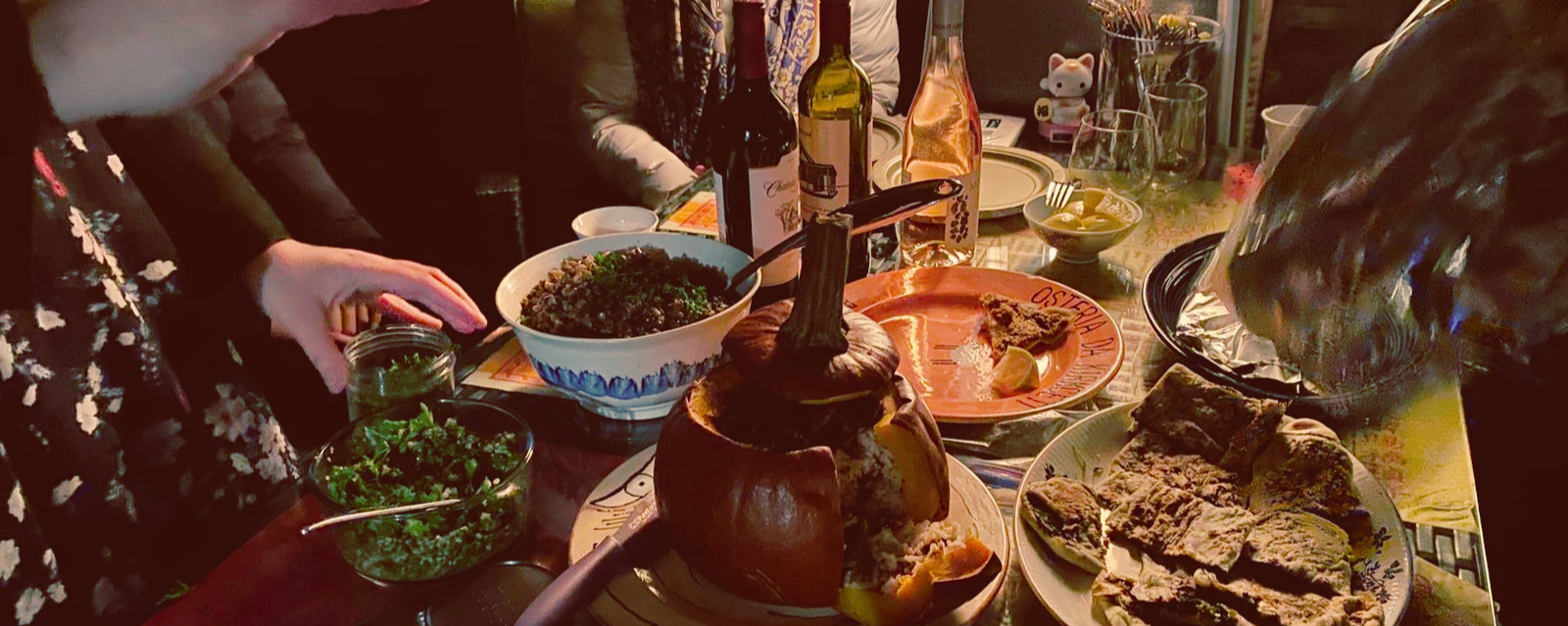Armenia
Outdoor dining in fall! In the thick of the first year of the pandemic. Plus a Pumpkin stuffed with good things!
November 12th - 2020
MENU
Rachel - Jiingalov Hats
Mindy - Ghapama Pumpkin
Noelle - Anoushabour
Stacy - Bean Pilaf Dish
Corrinne - Steak Skewers
Jess - Armenian Pizza
Armenian cuisine includes the foods and cooking techniques of the Armenian people and traditional Armenian foods and dishes. The cuisine reflects the history and geography where Armenians have lived as well as sharing outside influences from European and Levantine cuisines. The cuisine also reflects the traditional crops and animals grown and raised in Armenian-populated areas.
The preparation of meat, fish, and vegetable dishes in an Armenian kitchen often requires stuffing, frothing, and puréeing. Lamb, eggplant, and bread (lavash) are basic features of Armenian cuisine. Armenians traditionally prefer cracked wheat (bulgur) to maize and rice. The flavor of the food often relies on the quality and freshness of the ingredients rather than on excessive use of spices.
Fresh herbs are used extensively, both in the food and as accompaniments. Dried herbs are used in the winter when fresh herbs are not available. Wheat is the primary grain and is found in a variety of forms, such as whole wheat, shelled wheat, bulgur (parboiled cracked wheat), semolina, farina, and flour. Historically, rice was used mostly in the cities and in certain rice-growing areas (such as Marash and the region around Yerevan). Legumes are used liberally, especially chick peas, lentils, white beans, and kidney beans. Nuts are used both for texture and to add nutrition to Lenten dishes. Of primary usage are not only walnuts, almonds, and pine nuts, but also hazelnuts, pistachios (in Cilicia), and nuts from regional trees.
Fresh and dried fruit are used both as main ingredients and as sour agents. As main ingredients, the following fruits are used: apricots (fresh and dried), quince, melons, and others. As sour agents, the following fruits are used: sumac berries (in dried, powdered form), sour grapes, plums (either sour or dried), pomegranate, apricots, cherries (especially sour cherries), and lemons. In addition to grape leaves, cabbage leaves, chard, beet leaves, radish leaves, strawberry leaves, and others are also stuffed.










